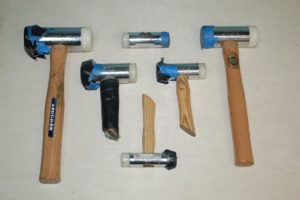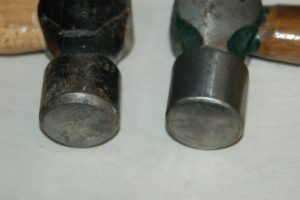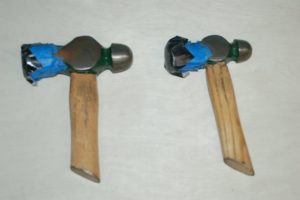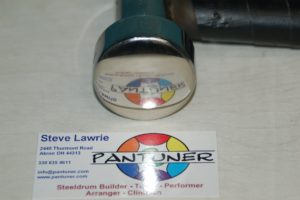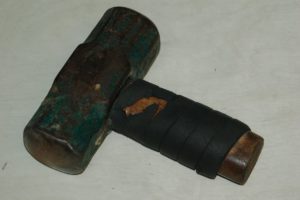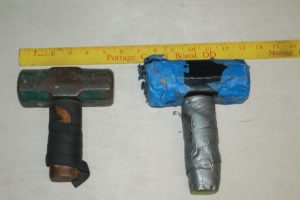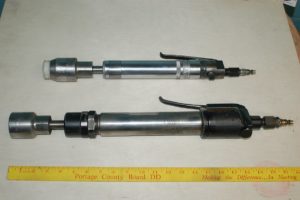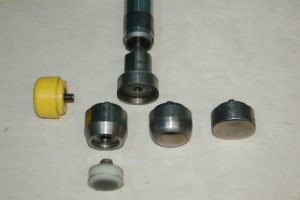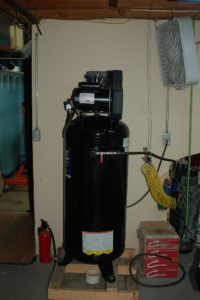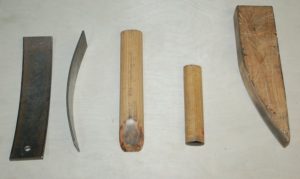I use a variety of hammers and tools for building pans. Here is a peek into my toolbox!
Prep/Tuning Hammers
These are my Vaughn/Thorex hammers. I use the white nylon tips on them. I cut the handles short on the smaller ones so I can get the hammer into the bowl of the pan. The tips are wrapped in masking tape and/or gorilla tape to prevent scratches when hammering on chromed pans. The hammer head without the handle is useful for performing "two hammer technique" when prepping the area near the rim of the pan.
NEVER, EVER use a hammer like the one on the left to strike a pan. This is typically what a hammer face looks like when you buy a ball-pein hammer. The sharp 45 degree bevel will cut into a pan surface in no time at all, and it is really easy to ruin an instrument with one of these. The hammer on the right has been properly shaped into a smooth, flat dome.
These are the two ball-pein hammers I use. Their weights are 32oz and 24oz. The faces are properly shaped, and wrapped in masking tape to prevent scratches on pans as well as damaged to the faces themselves - sometimes pans have dirt on them, and the kind of low-grade "steel" that these hammers are made from is prone to pick it up and then scar.
This is the "smoothing" face of my custom, 2" diameter tool-steel hammer. This hammer cost $500.00 to make, and is from high grade tool steel that has been hardened after it was shaped on a lathe. That surface has not been polished since about 2005 when the hammer was made - the advantage of using decent steel instead of the border-line "pig iron" that most hammers from China are made from.
Hand Sinking Hammers
On the left is my stock 4lb sinking hammer that I've had since 1982. This is the rounded face I used for sinking; the other face is more or less flat and used for smoothing. I haven't used this hammer since 2002 when I switched over to using the pnematic air hammers for sinking. If you don't have access to these, the 4 or 6lb hammers are what you need, shown right. Pad the handles with foam or latex so you don't hurt your hands. Take a grinder and round off the faces so that they don't have sharp edges.
I hardly use these hammers at all these days as I have switched over to using Pnematic Sinking Hammers.
Pneumatic Sinking Hammers
These are my pneumatic sinking hammers. I discarded the tip that came with them because it was not a useful shape and was made of extremely soft material. I purchased a lathe and made my own set of receivers, tips and adaptors out of tool steel.
This is the set of tips that I use on my air hammers. Both air hammers have the same receiver on them, into which any of these tips can be mounted. L-R : 2" Nupla tip, Adaptor + Tip for the 1 1/4" Vaughn Nylon Tips, Sinking tip, and the smoothing tip. The last two tips are identical to the shapes on my custom 2" hammer shown above.
I use a 60 gallon, 155PSI twin-head unit that can deliver 11.5 SCFM @ 90PSI, and it draws 15A on a 240V line with a 3.7HP motor. I've mounted a box fan over it to keep as much air flowing over it as possible when it is in use.
This is about the minimum size compressor I would recommend.
